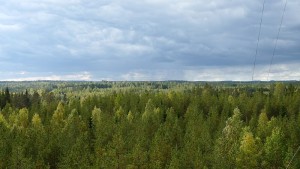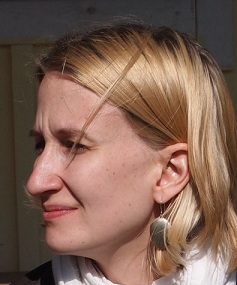 iLEAPS (Integrated Land Ecosystem – Atmosphere Processes Study) is an international research programme focussing on the land-atmosphere interface. The iLEAPS International Project Office (IPO) is hosted by our Division since the start, and for the past 8 years, iLEAPS has tried to advance multidisciplinary research on land-atmosphere interactions in an international setting. Now, the IPO consists of Tanja Suni, Alla Borisova, and 10% of Magdalena Brus.
iLEAPS (Integrated Land Ecosystem – Atmosphere Processes Study) is an international research programme focussing on the land-atmosphere interface. The iLEAPS International Project Office (IPO) is hosted by our Division since the start, and for the past 8 years, iLEAPS has tried to advance multidisciplinary research on land-atmosphere interactions in an international setting. Now, the IPO consists of Tanja Suni, Alla Borisova, and 10% of Magdalena Brus.
The first phase of iLEAPS (2004 – 2014) has been a time of awareness-raising and establishing a united community of land-atmosphere scientists. Science conferences held in Helsinki (2003), Boulder (2006), Melbourne (2009), and Garmisch-Partenkirchen (2011) brought to light the importance of land-atmosphere processes and feedbacks in the Earth System, and a number of publications have shown the crucial role of the terrestrial ecosystems as regulators of climate and emphasised both the long-term net impacts of aerosols on clouds and precipitation. Furthermore, the iLEAPS community has drawn attention to the importance of realistic land-use representation in land surface modelling and to that of other feedback processes and regional characteristics in current climate models and recommended actions to improve them.
Human influence has always been an important part of iLEAPS science but in Phase II (2014-2024), iLEAPS will move further towards bridging the gap between socioeconomics and natural sciences to shed light on research questions advancing global sustainability. Phase II will see the foundation of new types of research groups such as the Pan-Eurasian Experiment (PEEX) that will include large-scale, long-term, coordinated observations and modelling in the Pan Eurasian region, especially to cover ground base, airborne and satellite observations together with global and regional models to find out different forcing and feedback mechanisms in the changing climate, taking into account the simultaneous societal and cultural change. PEEX is coordinated by the iLEAPS-Eurasia Office, run by Hanna Lappalainen and Tuukka Petäjä.




